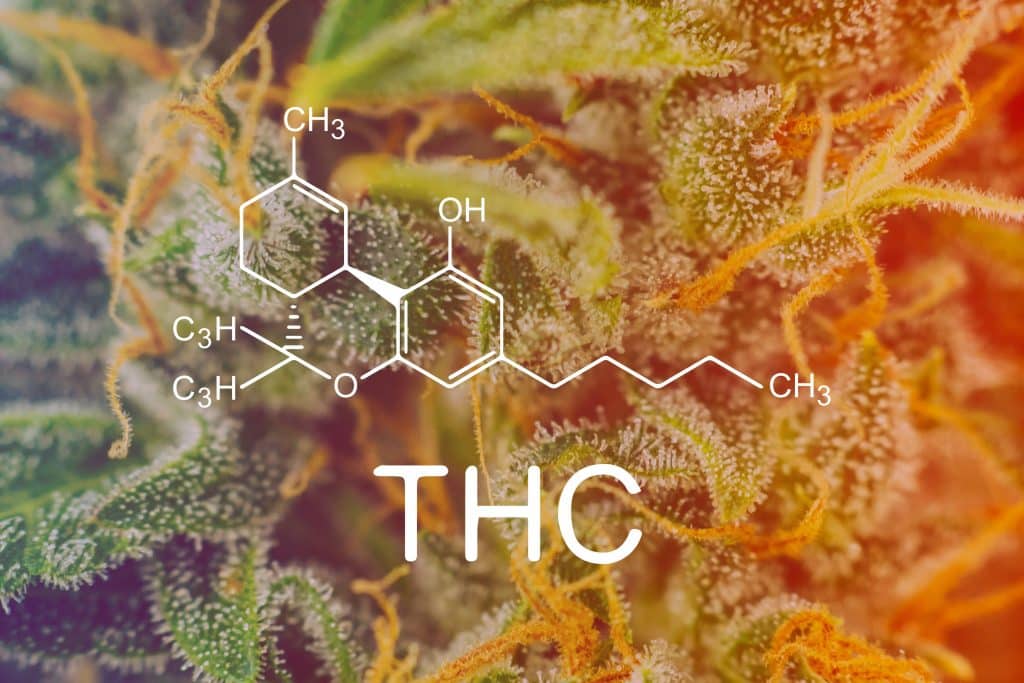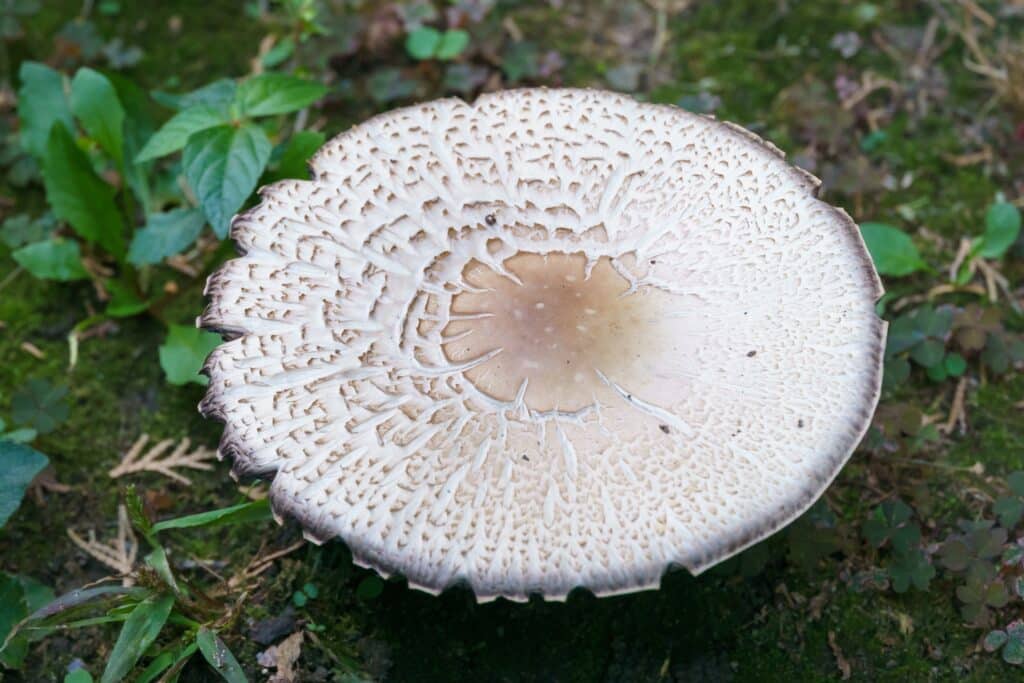
New Magic Fungi? Lab Mishap Leads to Discovery of THC Mushroom
[ad_1]
Sometimes these things happen. Things don’t go as planned, and the result is actually something good, or at least interesting. Such is the case with a recent discovery that took place in light of a lab mishap. A mishap that resulted not in injury, but in the discovery of a THC producing mushroom. Read on to find out more.
Champignon mushroom basics
The most popular edible mushroom in the world today is the champignon mushroom, categorized in taxonomy as Agaricus bisporus. They go by many slang names, like ‘common mushroom’, ‘white mushroom’, ‘button mushroom’, ‘cultivated mushroom’, ‘table mushroom’, and ‘champignon mushroom.’ It’s classified as an edible mushroom, and is perfectly safe to eat.
We know them as small, white mushrooms, with nothing particularly standout about them. They usually fit in the palm of the hand, and are generally perfectly round. They’re tasty even if they don’t look special, and can be found adorning salads, in soups, on sandwiches, and with plenty of other dishes. They do come in a browner version as well, at which point they have different slang names, like: ‘Swiss brown mushroom’, ‘Roman brown mushroom’, ‘Italian brown mushroom’, ‘cremini/crimini mushroom’, ‘chestnut mushroom’, and ‘baby bella’.
These mushrooms are super healthy, and provide 93 kilojoules of food energy, as well as providing a great source of B vitamins, riboflavin, niacin, pantothenic acid, and phosphorus. They are also pretty common, as they are cultivated in more than 70 different countries.
Hello, thanks for joining us. You can get direct updates by signing up for the Cannadelics Weekly Newsletter. It also comes with great deals on cannabis buds, vapes & other smoking equipment, edibles, cannabinoid compounds (like HHC), amanita mushroom extracts, and a whole lot more. It’s time to get stoned, do so responsibly!
These mushrooms are specifically grown for food purposes, and contain no psychoactive properties. They are not related to either psilocybin mushrooms, or Amanita mushrooms (which contain the psychoactive compounds muscimol and ibotenic acid). At no point have these mushrooms been used to get high in any way, which makes the following incident and discovery, a rather interesting feat.
The Breakermore mushroom experiment
While the title to this experiment sounds like it could be some covert government project, it’s actually a lot more mundane than that. In fact, the whole research project is based around studying the mycelium of the fungi; which is the tangled mass of white fiber-looking material that is common to all mushrooms. Mycelium is thought to possibly be related to communication between plants, and the Breakermore experiment is simply to test this out.
Breakermore is a research center within the University of Wyoming’s Department of Botany. It received funding from the Fungi Foundation, an organization that functions globally to study and gain further knowledge on fungi in general; to test the communication ability of champignon mushrooms using their interconnected mycelium network.
The trials were set up to assess if different stimuli could elicit a communication response. Four trials were planned. The first used a chemical spray to test if the mushrooms would warn each other about it, by spraying one and not the others. The second was similar, but used hot air to see if a communication warning signal passed. In the third trial, only some mushrooms were fed, and others not, to see if the ones which got nutrients could pass nutrients to those that didn’t. And the fourth set of trials involved picking mushrooms to see how the other unpicked mushrooms responded.
All told, the trials were set to last eight weeks, with two weeks per trial. And though for the most part the trials ran as they were supposed to, there was one little glitch, that led to one massive discovery. Mainly because of researcher Jesse Maganowitz, who inadvertently added a little something extra to the experiment.
Study glitch leads to finding THC mushroom
The thing about research trials is that they are extremely sensitive. One thing is tested, and anything that can affect it outside of the experiment, or that can possibly ruin a trial by introducing something unaccounted for, must be eliminated. In the case of the Breakermore mushroom studies, this is not exactly what happened.
In a subsequent interview after the discovery, Jesse Maganowitz explained the semi-unfortunate, and wholly-awesome discovery, and his part in it. He explained, “I know it was me, and I know I ruined the trial. Obviously I’m glad that something came out of it, or I’d probably have lost my job. Funny how things turn out.”
And it is rather funny. Maganowitz was working an early morning shift during the feeding trial, wherein one half of the mushrooms were fed, and one half left without food; with the intention of seeing if the mushrooms could communicate enough to share nutrients. “It’s like, watching mushrooms is kind of like watching paint dry,” said Maganowitz, “and in this type of research you’re sometimes looking for the most tiny little things. I admit, I was tired and a little bored.”
So, what did the junior researcher do? He took out a joint stuffed with Purple Haze weed, and lit up. “Truth is, for those trials, I was always scheduled alone in the morning, and I admit, I probably shouldn’t have been smoking weed. And certainly not by the mushrooms. It’s like, I just never thought it mattered.”
But it did. And after a week and a half of blowing out smoke in the confined test room, he noticed something interesting, the mushrooms seemed to be building mycelium at a much faster rate. “I wasn’t even sure what to think,” said Maganowitz, “it was this crazy cool thing that was happening on my watch. If only I had understood why.”
It truly is a strange thing,” said research lead Dr. Dorothy Jacks, “something that hasn’t been seen before. Something that we didn’t know existed. And certainly something we weren’t looking for at the time. Even now, I’m not sure if I should be angry with Jesse for changing the focus, or excited about the discovery.”
What’s a THC mushroom?
The compound THC is found in cannabis plants to varying degrees depending on the strain of cannabis in question. It wasn’t until this experiment, that the compound was found elsewhere. “We still don’t understand it,” explained project head Antonio Barre, “we were doing one thing, and then we just changed course, looking for something else.” When asked what exactly happened, he threw his hands up in the air and exclaimed, “We somehow created a THC mushroom, which hasn’t been seen before.”

“I know I smoked several joints each day with them,” lamented Maganowitz, “I knew the mushrooms themselves wouldn’t be affected, but I never considered that the smoke, or plant material, might get into the mycelium.” And while it hasn’t been 100% confirmed that this is how it happened, it is the going theory. “It would make much more sense for it to have happened when playing with the genes, you know?” said Maganowitz. “I still don’t totally get how smoking near them embedded the THC in their genome, but it looks like it might have.”
When the extra-mycelium-producing mushrooms were dissected and investigated, the team found that all the newer fungi growing, produced small amounts of THC. “Actually pretty minimal,” explained Barre, “not enough to feel it if you ate them, but it was there. And if it can be there a little, then chances are with the right tweaking, it can be there a lot.”
When asked specifically what a ‘THC mushroom’ is, Barre explained that “it’s a regular champignon mushroom, except that it somehow produces some amount of THC. Like the cannabis plant does. We’re still checking to see if we can find other cannabinoids as well, but so far we’ve only isolated the THC.”
THC mushrooms and the future
“The funny thing is that we’ve entered a realm with no real laws, or at least not specific to this fungi” said Jacks. I had to explain to the board of directors that we were working with THC and a mushroom, but that we didn’t actually have marijuana as part of the test. Aside from Jesse smoking, anyway.”
THC is a Schedule I substance in the DEA’s Controlled Substance list. It’s also in Schedule I of the UN’s drug treaty the Single Convention on Narcotic Drugs. While it might be argued that these placements are unnecessary, they’re still there, and affect the ability to freely research the cannabis plant. “Except, of course, that’s not what we’re researching,” laughed Jacks. “We’re researching champignon mushroom communication. Making a THC mushroom was just a weird and terrific coincidence, that now means we have to explain the presence of THC.”
“Oh god, I hope they don’t add champignon mushrooms to the list of controlled substances because of me,” stated Maganowitz. “I know a lot of people won’t be happy with that one.” And while classifying the whole fungi grouping as illegal would be a pretty big, and probably unnecessary step, this new ability for a THC mushroom begs the questions, 1) How did this really happen, and 2) Where else can we grow THC?
Conclusion
The Breakermore mushroom trials are still not fully completed, as all attention turned to the newly found THC mushroom conundrum. Researchers are still trying to figure out the full story, and attempting to re-create the scenario. As of yet they have not been able to get the same thing to happen again, but the already grown THC mushrooms give plenty of material for engineering more of the same. Perhaps keep your eyes out for THC mushroom products in the future.
Hello all! We appreciate you making it over to Cannadelics.com; an independent news site bringing you the best in reporting for the burgeoning cannabis and psychedelics fields. Hang out with us whenever possible to stay updated on important happenings, and sign up to the Cannadelics Weekly Newsletter, so you’re always on top of what’s going on.
Related
[ad_2]


